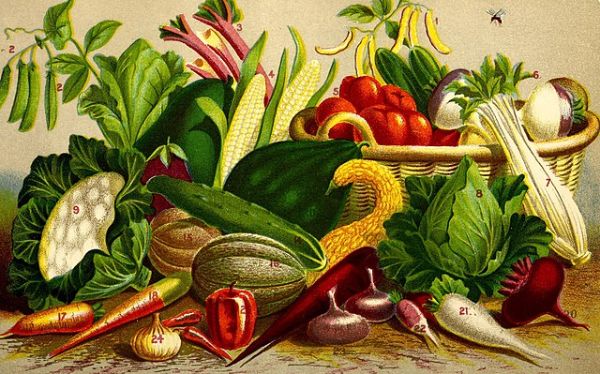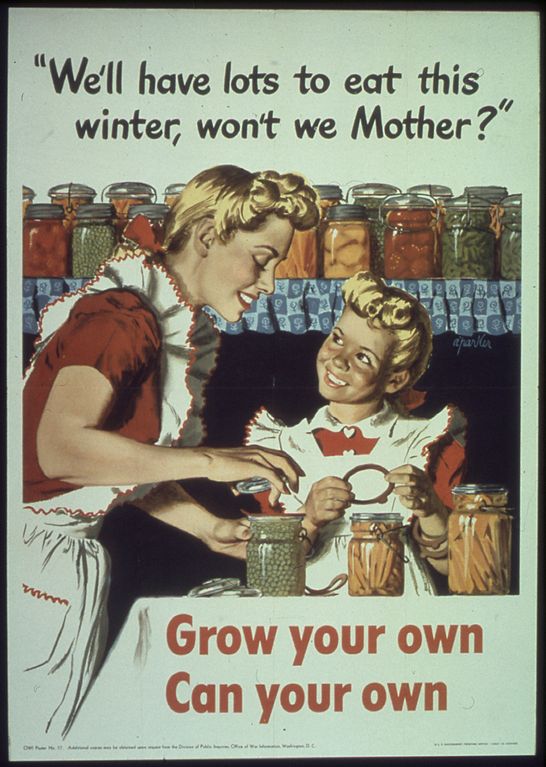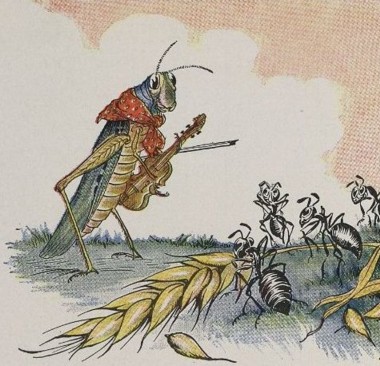Colder temperatures are here, but you don’t have to let go of the garden just yet. Plenty of vegetables can grow right through the cold winter months, or overwintered until spring rolls around. Winter also means fewer bugs, fewer weeds, and less-frequent watering, so you can happily fill up your plate during the fall and winter holidays with vegetables from your own backyard.
Growing Tips for the Winter
While plenty of vegetables are cold- and frost-tolerant, some protection will assist those that aren’t as hardy or extend the life of those that do even further.
Covering
With proper protection, many summer and fall crops will keep growing into the winter. Generally, when temperatures drop below 25ºF, it’s a good practice to cover up your crops. The plants themselves might be hardy, but the quality of their leaves and roots might suffer from the wind and the snow.
Cold frames and greenhouses are popular, semi-permanent structures that protect vegetables from the snow and the cold, keeping warm air inside. You can even make your own by balancing old windows over bales or boxes around the edges of the patch. Cloches are like mini versions of a greenhouse; they’re lifted and placed over individual plants or small plots, but you can make a quick DIY version by placing a tomato cage over the plants and stretching a clear plastic trash bag over it. Row covers are another option, and are erected by draping fabric over metal hoops that have been placed down the rows. Spreading mulch or straw over the soil will help insulate the roots as well.
Because of the low temperatures and short days of winter, plants will benefit from more light. On very sunny days, taking off whatever protective cover you’ve chosen will allow more sunlight and warmth to reach the plants.
Timing
Timing is also imperative for winter crops, especially for germination. Many plants are better suited for the cold when they’re larger and more established and will need to be started early so they reach maturity before the first frost date. One way to circumvent the estimated frost date is to start seeds inside and transplant the veggies to their outdoor plot once they’re larger.
Winter temperatures will vary by region; consult the USDA Plant Hardiness Zone Map to determine which zone you live in, and therefore which crops you can expect to survive. Most seed packets will list the optimal zones for a crop, as well as how soon before the first frost date it should be planted. If a hardy crop is already established by that first frost date, it has a much better shot of making it through the winter.
Best Vegetables for Winter Growing
Arugula
This peppery green is a perfect addition to winter salads. The seeds should be sown in the mid-fall for a winter harvest, and will handle winter temperatures just fine if grown in a cold frame. Their compact root systems make them easier to cover (or to grow inside, if you prefer). Some varieties will also go dormant and overwinter, coming back again in the spring.
Beets
Believe it or not, winter beets taste even better than their summer counterparts; the roots store sugars in the cold weather, so the crop will turn out much sweeter. Beets like full sunlight but can survive frost and near-freezing temps, especially hardy varieties like the Lutz Winter Keeper. Plant the beets in the early-to-late fall for a winter harvest in Zone 8 or warmer. Don’t worry if the leaves on the surface die back as the temperature drops; the roots underneath the ground will be just fine. If temperatures are projected to remain around 25-30ºF and below for several days, go ahead and harvest them.
Broccoli
Broccoli is a cool-season crop that actually prefers fall and winter temperatures down to 25ºF. It can germinate in temperatures as low as 40ºF, and its frost tolerance increases as the plant matures. It’s a slow-grower in the cold, so don’t panic if you’re not seeing much action.
Brussels Sprouts
While they do best between 45º-75ºF, Brussels sprouts can survive for short periods at temperatures down to 20ºF. Depending on the variety, they can grow in zones 3-9; in warmer regions like the Pacific Northwest, they’ll grow through the whole winter. They take three to six months to mature, so you might want to start brussel sprout seeds indoors to get a jumpstart on the season.
Cabbage
Look out for winter cabbages with smaller heads – like Danish Ball Hear and Huron – for your winter garden. Some cabbages can survive in the cold temperatures of hardiness zone 2, and the seeds will germinate in temps as low as 40 degrees. Winter cabbages are slow growers, so patience is key.
Carrots
Like beets, the starches in carrots turn to sugars in the cold, making the crops sweeter. Carrots prefer soil temperatures of 45ºF and above, so a row cover or tunnels are helpful structures; otherwise, mulch the ground heavily before a freeze, or cover the soil with fabric. Even when their green tops die back, the roots underneath will continue to thrive.
Cauliflower
Cauliflower doesn’t do well in extreme heat; in fact, it can’t handle temperatures higher than 75ºF, and is best to grow in the fall – or even into the winter in some regions. It’ll experience some damage if temperatures fall below 20-25ºF, but if temperatures don’t usually drop below that point in your area, you can expect to harvest them all winter long!
Celeriac
Have you ever pulled out the root of a celery plant? If you have, you’ve seen this round, hard root ball that forms under the green celery stalks, called celeriac. This root vegetable has an earthy, vaguely celery-like taste, and can be sauteed, grilled, and baked to perfection. It prefers cool temperatures in the fall and winter, and can survive long after its green stems above the ground die back. Mulch the soil above the roots, and harvest in the mid-winter months.
Collard Greens
These leafy greens are one of the hardiest Brassica species and can live through temperatures in the upper teens. A hard freeze will kill them off, but if you protect them with some sort of coverage when the temperatures plummet, you can keep them alive and extend their growing season well into the winter.
English Peas
Peas tend to trail and crawl up trellises or fences, but if you choose a dwarf variety like Douce Provence or Meteor, you’ll be able to cover them with a cloche and grow them into the winter months. They’ll germinate in temperatures as low as 40ºF and can withstand snow, but uncovered peas will likely die back if temperatures in the teens persist for days on end.
Garlic
Garlic isn’t usually harvest-ready in the winter but instead will overwinter in your garden in preparation for spring. This frost-resistant crop is usually planted in the fall (September through November, depending on your zone) before the first big freeze and harvested in the spring. Garlic is happiest if given a dormancy period; 4-8 weeks of temperatures around 40ºF or lower will help them develop. In colder areas, hardy hardneck varieties – which grow a ring of cloves around a hard stem – are your best bet.
Kale
Kale is among the hardiest of all vegetables. It can withstand freezing temperatures: some varieties as low as -10ºF. Darkibor, Red Russian, Winterbor, and Rainbow lacinato are especially hardy. The leaves become sweeter when grown in the cold, like carrots and beets, and can provide you with fresh greens deep into the winter. Extend your summer kale crop by giving them plenty of light, fertilizing in the fall, and maintaining moist soil. Depending on the variety, you might want to cover them up when temperatures really drop, or during heavy snows, which might break the stems.
Kohlrabi
These round, less-popular Brassicas are happiest in cold temperatures and taste a bit like a mild turnip when peeled and cooked. It’ll need temperatures of at least 45ºF to germinate, and in warmer regions, it can grow right through the winter, especially under mulched soil.
Leeks
Generally, most varieties of leeks can survive deep frosts, snow, and wind, especially varieties with bluer leaves and thicker, shorter stems. Paired with some coverage, you can rely on them to make it through the whole winter. The trick is to keep the roots of the leek from freezing by mulching the top of the soil.
Mustard Greens
While not quite as hardy as other leafy greens like kale and collard greens, mustard greens can handle light frosts. They’re quite easy to care for, and can last into the early winter months in colder regions, or right through to spring in regions with higher temperatures. They like to stay moist, so mulch the soil with wheat straw to trap water.
Onions
Like garlic, onions overwinter well. Plant them as late as two weeks before the first hard freeze, although make sure they get full sun. Choose a variety that labels itself as an overwinter-er for better results, like an heirloom, red, yellow, Kentucky Hill, and Greeley’s onions. Keep the ground well-mulched and cover if the temperatures drop below -10ºF, and after two or three months, you can begin digging up onions to enjoy in your favorite winter soups.
Radishes
Radishes do well with temperatures down to 50ºF, but can still last through some deeper frosts. Winter radishes are slower to develop than those grown in the spring, but they’ll be larger, crisper, and more flavorful. They’ll store in the ground through the winter as long as the soil doesn’t freeze.
Swiss Chard
These frost-tolerant, colorful greens can grow in zones as low as 8, or 7 if they are heavily mulched or otherwise protected. They will be killed, however, if the temperature goes below 15ºF, but a cold frame can keep them going further into the winter. Swiss chard is also a biennial plant, meaning it’ll produce for a second year after being planted.
Author
Linnea Harris graduated from Skidmore College in 2019 with a Bachelor’s degree in English and Environmental Studies, and now lives in Brooklyn, New York. Along with her most recent position at Hunger Free America, she has interned with the Sierra Club in Washington, DC., Saratoga Living Magazine, and Philadelphia’s NPR Member Station, WHYY.








